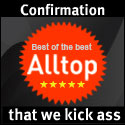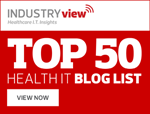Healthcare Unbound - Opening and Keynotes

I'm going to be blogging the Healthcare Unbound converence, today and tomorrow. These posts will be posted quickly, so you might want to check back later to find a more readable text, photos, and perhaps some more complete thoughts.
Lots of new technology, nascent clinical validation, and a rich stew of startups and large multi national corporations all collided in today's first day of the Healthcare Unbound conference. Jay Srini, from UPMC.kicked things off, noting that Healthcare Unbound (HU) is truly unbound, ranging from the home to battlefield, and out to space with the monitoring of astronauts. My favorite market research firm, Spyglass Consulting and the reality check offered in their study on the remote patient monitoring market.
“Everything you know is wrong” was the theme of Vince Kuraitis's keynote. First he started with a survey of remarkable events of the past year:
- Continua created through Intel's leadership
- Understands the need for interoperability as a condition for the remote monitoring market's advancement. And while interoperability is necessary, it is not the sole need. Another need to be targeted by Continua will be reimbursement
- The next event: Medicare's pilote/demo projects. These projects are the Medicare Health Support (MHS) and Care Managment for High Cost Beneficiaries (CMHCB).- disease management companies are the real winners of MHS, but Medicare has many provider based experiments in the works.
- The American Health Information Communicty (AHIC) breakthrough proejcts launced for secure messaging and personal health records
- Industry consolidation
- Matria acurie CorSolutions, Healthways acquires Livemasters, Philips acures Lifeline
- Physicians (AAFP and ACP) endorse the medical home model
- Qualcomm announces plans for a healthcare MVNO
- SPAN study finds that disease management plus remote patient monitoring is greater than disease management alone
- The UK has signed a National framework agremeent for telecare.
- VeriChip announces IPO plans
- California enacts the Tom Cruise Ultrasounde Bill
What you think you know (that's wrong): The killer app for Healthcare Unbound technologies is chroinic disease management
Why will the HAH market segment take off in the U.S? The government has projected that by 2014 that hospital care will cost $1 trillion, by far the largest category of costs in health care. There is much greater potential savings by reducing hospital care by treating some patients at home.
What you think you know (that's wrong): Providers, especially physicians, are technology crumudgeons
Providers are begining to see the light, and will become proponents in the near future. Concepts like the Advanced Medical Home, secure e-mail, remote monitoring and pay-for-performance have all recently garnered support by the American College of Physicians and the American Association of Family Practice physicans.
What you think you know (that's wrong): Healthcare Unbound is about home sweet home.
What you think you know (that's wrong): A $34 billion health care unbound market size by 2015? That number is too low.
Eric Brown, Research Director for their health care practice, provided an overview of the Healthcare Unbound market.
In the past, vendors had to create their own end to end solutions. The market and technology are maturing to the point where vendors can focus on certain core IP, and buy non-core technologies from others. Continua Health Alliance is an example of the push for interoperability to grow the market. The marketing challenge is that people will not buy solutions to problems they don't recognize. Bob Dole's famous commercials early in the life of Viagra represented a mile tone in establishing consumer awareness in erectile dysfunction and the fact that there's an available therapy. And of course vendors and providers must be paid for HU type applications. Eric presented some data on what consumers would pay for various tele health applications (not much).
Eric then offered up some case studies about barriers and roadblocks to HU market adoption. The bottom line was “great technology” but no “eco system.” Alere was one example - 1998 created a home health SpO2 device, 2002 completed a benchmark study demonstrating value, 2003 they evolved into a full disease management firm to create the necessary eco system to deliver a whole product solution. Another case study was Living Independently. They used commercially available technology to create an elder care monitoring system. They've also leveraged ADT for installation, support and distribution. This company is on a much more direct and rapid road to profitability.
What should you do? Don't expect to create a walled garden of proprietary solutions - join Continua. Don't let the tech solution get too far ahead of the basics of problem awareness. Promote the economic value of the broader HU solution.
Next up was Joe Kvedar MD, founder and Director of Partners Telemedicine.
Pictured right the lobby of the conference hotel, the venerable Hyatt Cambridge.



